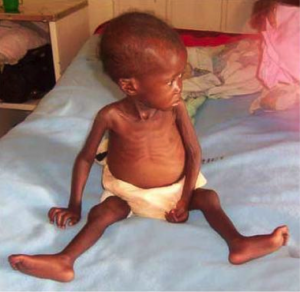HIV and the Environment
You might think that I am joking if I tell you HIV has an impact on the environment but unfortunately, I am being serious. HIV and environment are closely related to each other, especially in rural areas and developing countries.
In rural areas, natural resources are important to generate income. When resources are scarce, poverty is deepened. Desperate times call for desperate measures, and we see more individuals engaging in “transactional sex” for material goods to meet daily sustenance needs. This increases the risk of HIV infection, especially when the age differences in a “Sugar Daddy” relationship is huge, or when a substantial amount of assistance is involved, as such situations increase the willingness to engage in unsafe sex.
Also, scarcity in resources leads to malnutrition, which in turn weaken the immune system of those infected with HIV, increase the vulnerability of opportunistic infections, increase the possibility of HIV transmission from mother to baby and reduce the efficacy of HIV treatment. In addition to this, rural areas that are heavily affected by HIV tend to use fuel wood as source of energy for cooking. The use of wood fire is inefficient in energy production and at the same time, it causes indoor air pollution that is extremely harmful not only to healthy adults but also HIV patients.

Most AIDS deaths in developing countries are concentrated in prime working ages. Such deaths affect the families, who are already struggling with poverty, and scarcity of resources makes it worse, since households with breadwinner passing away will most likely rely on gathering wild foods for their survivals.
HIV also affects the environment, particularly the use of lands. With family members disabled from HIV, labor shortages are aggravated. This changes the use of land resources. Agricultural productivity is reduced since families affected by HIV have difficulty in weeding their cultivated plots.
Another issue that arises is loss of crucial human capital. Traditional knowledge about cropping and resource use and labor are lost with the deaths of experienced farmers, causing resource management institutions and organizations to suffer. It is also an adverse impact to the community.
Apart from change in use of land resources, families affected by HIV may also lost their basic access to land due to patriarchal inheritance. Since most women gain access to land through their husbands, their deaths usually mean that male relatives who inherited the land upon their deaths deny the access of women to the land.
Such impacts necessitate environmental policymaking to revolve around sustainable use of local environments to reduce dependence on natural resources. Poverty reduction is crucial. AIDS orphans should be offered training and internships to help them obtain well-paid local conservation jobs to help the local economy, prevent them from engaging in risky sexual behavior, thus lessening the spreading of HIV and protecting natural resources.
To link HIV with environment might seem absurd and far-fetched but it is not. Think of it: if details of a hurricane can be influenced by flapping of the wings of a distant butterfly several weeks earlier, why can’t the environment be affected by HIV?
So, bear that in mind whenever you feel reluctant to get your HIV test in Singapore. You can change the fate of the environment we are living in.
 Kampung Blog
Kampung Blog
Leave a Reply